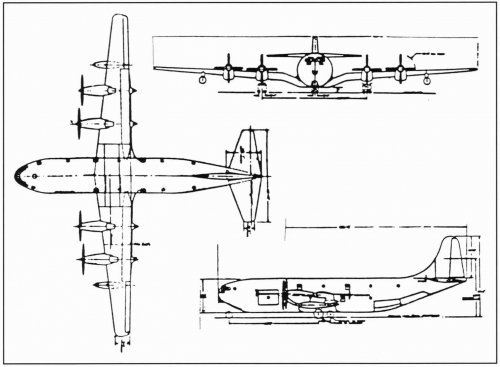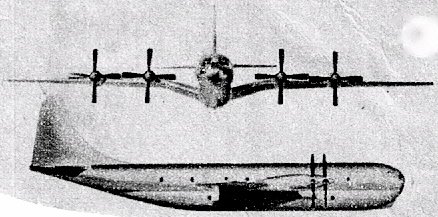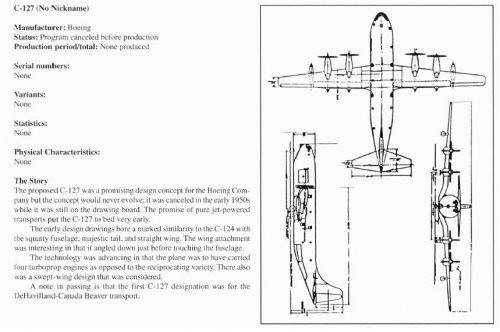Hi,
While doing a tiny peak of Chapter 6 of American Secret Projects 2: Airlifters 1941-1961, I found out that C-127 was the initial designation for the C-124B (Model 1182). Also, the plane in the drawing that was stated in some military aviation books to have received the second usage of the C-127 designation (originally assigned to DHC-2 Beavers in US Army service) is not the Boeing 367-60, but instead the Boeing Model 493-3-2, judging from the smiley face-like feature on the front of the nose and some other features. The 367-60 had a gull wing and turboprops like the Model 493-3-2, but differed in having slightly backswept wings. (The use of C-127 for the C-124B reminds me of the nose radome-equipped Sabre, Republic Thundersteak, and Mighty Mouse-armed Starfire being originally designated F-95, F-96, and F-97 respectively before being redesignated F-86D, F-84F, and F-94C.)
That said, the mix-up of the Boeing 367-60 and 493-3-2 with the C-127 designator is a similar case to the situation where the XB-31 was thought to have been assigned to the Douglas Model 423 before Alan Griffith pointed out that XB-31 was actually the Douglas Model 332F bomber version of the DC-4/C-54 and that the Model 423 was conceived long after the B-29 and B-32 were selected for production for the R-40B contest.



